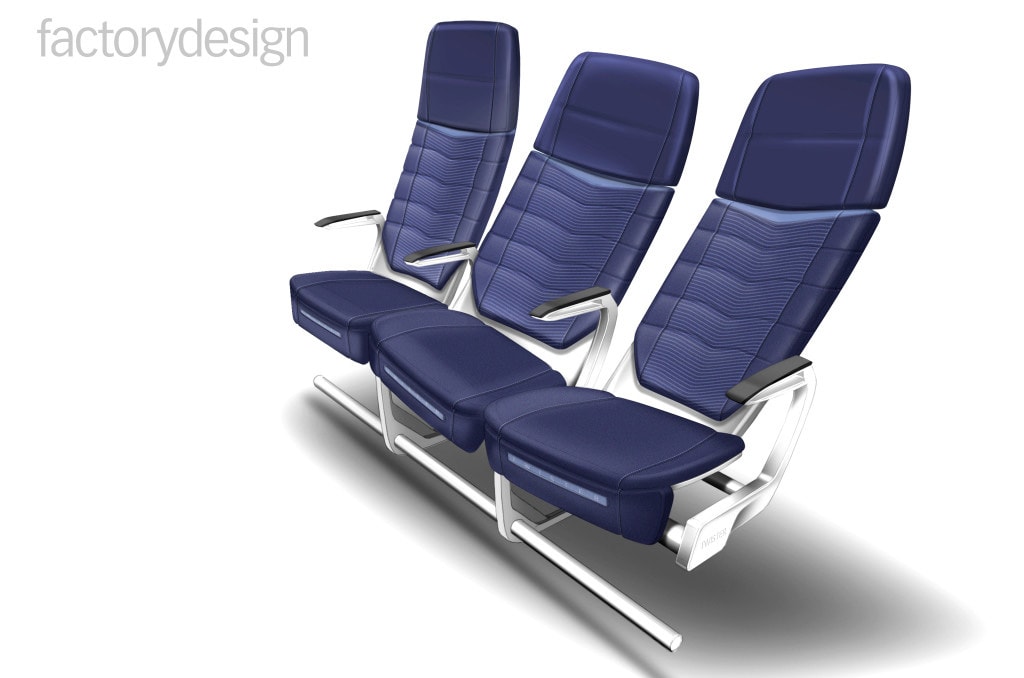Comfort With a Twist: Factorydesign’s Ergonomic Economy Twister Seat
Share

APEX Insight: Sitting for hours on end doesn’t have to be painful. Passenger comfort is the main inspiration behind Factorydesign’s Twister Seat, which mimics the structure and movement of the human spine. In the third installment of our series on aircraft seats, Factorydesign’s director, Adam White, explains why the ergonomic design could be a turning point for economy class seating.
This story was originally published in the March/April issue of APEX Experience magazine.
It was an uncomfortable realization for Adam White – economy-class airplane seating had to be revolutionized. White, director at London-based Factorydesign and a frequent flyer, was on a long-haul flight, attempting to get settled in his economy-class seat, when the idea for the Twister Seat was born.
“When you start to get uncomfortable, you don’t bend both knees simultaneously,” White says with a laugh. “I’m twisting and turning to try and find some comfort, but my seat, stubbornly, is acting like a door hinge.”

The Twister Seat is ergonomically designed around the structure and movement of the human spine. The seat twists side to side and forward to back, mimicking the natural body movements of the rib cage. Size-wise, the chair will be comparable in weight and dimension to standard economy seating.
“This is such a radical departure from anything we’ve seen before, so we needed to make prototypes that we could do some serious work on,” says White. Seating trials of four to six hours, with four prototypes, were used to assess passenger comfort levels, and White says the results were compelling.
Although comfort was the primary inspiration, health and social benefits were factors, too. “The seat accommodates the intimacy of conversation,” says White. “[Similarly,] if you don’t want to be involved, the seat will twist away from the person next to you, allowing for the feeling of privacy.”
On a less flexible seat, when passengers cross their legs, pressure points under the thighs prevent blood from circulating normally. With a modular pan that lowers to accommodate this movement, Factorydesign’s pressure maps showed the seat provides a significant relief of stress in this area, reducing the risk of deep vein thrombosis.
“Economy doesn’t feel as healthy as it should,” notes White. But he’s optimistic it’s set to improve. With interest from airlines as well as engineering and technology groups, the Twister Seat may be providing comfort as soon as 2017.


